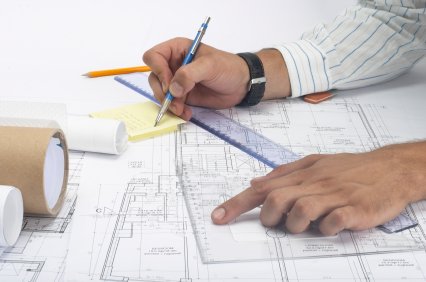Comprehending the Diverse Job Paths Available for Aspiring Architect
As an ambitious Architect, you have a world of occupation paths waiting for you. Whether you're drawn to standard architecture or the nuances of sustainable style, there's a specific niche that lines up with your rate of interests.
Standard Design: Designing Structures and Structures
Standard style concentrates on designing buildings and structures that mix capability with aesthetic allure. As you explore this field, you'll value the detailed equilibrium in between kind and function. You'll learn to draw motivation from historical designs, incorporating components like proportion, materials, and workmanship. Your styles can mirror social heritage, showcasing local practices while satisfying modern-day requirements.
You'll develop abilities in composing, model-making, and website evaluation, allowing you to picture and connect your concepts properly. Engaging with customers, you'll need to recognize their vision and translate it into possible designs.
In addition, building codes and sustainability methods are vital in your work, ensuring your structures are safe and environmentally pleasant. As you grow in your occupation, you'll find opportunities in property, business, or perhaps restoration projects, each offering special obstacles. Accepting typical architecture leads the way for a meeting profession that pays tribute to the past while forming the future.
Urban Planning: Shaping Areas and Public Spaces
As a hopeful Architect, you can play a necessary duty as a metropolitan organizer, changing exactly how areas work and engage. By utilizing neighborhood interaction approaches, you'll assure that residents have a voice fit their atmosphere. And also, integrating sustainable layout principles will certainly help produce spaces that not just meet today's requirements however additionally secure the future.
Role of Urban Planners
While lots of might think of architects as the single visionaries behind buildings, metropolitan planners play a crucial function in shaping the broader landscape of communities and public rooms. They evaluate land usage, zoning regulations, and area needs to produce sustainable settings that enhance top quality of life. By working together with numerous stakeholders, you'll help design parks, transport systems, and residential locations that promote social interaction and accessibility. Urban planners additionally concentrate on ecological factors to consider, making sure that advancements incorporate green rooms and assistance biodiversity. Your competence in spatial layout and community dynamics allows you to imagine future growth while preserving social heritage. In this essential role, you'll straight affect how people experience their environments, making every project a possibility for positive change.
Neighborhood Involvement Strategies
Efficient neighborhood interaction techniques are important for metropolitan planners to guarantee that the voices of locals are heard and valued in the preparation process. To foster purposeful dialogue, you need to prioritize open discussion forums and workshops where community participants can share their concepts and problems. By actively listening and integrating feedback, you'll develop areas that mirror the neighborhood's demands, ultimately leading to more effective and sustainable city atmospheres.
Sustainable Design Principles
When designing urban areas, incorporating lasting style concepts is vital for producing atmospheres that prosper both environmentally and socially. Think about integrating environment-friendly areas, like gardens and parks, to boost biodiversity and boost air quality.
Designing with water preservation in mind is also vital-- think of rainfall gardens and absorptive surfaces to manage stormwater. Involving community members throughout the planning procedure assurances that the areas you create meet their needs and motivate social interaction. By welcoming these principles, you'll add to vivid, lasting metropolitan landscapes that benefit every person.

Landscape Architecture: Creating Sustainable Outside Atmospheres
As you check out landscape design, you'll find necessary layout concepts that produce practical and attractive exterior areas. Lasting techniques play a crucial role in ensuring these settings grow while minimizing ecological effect. And also, you'll find a range of job possibilities that permit you to make a real distinction in exactly how people interact with nature.
Design Principles in Landscape
Understanding design concepts in landscape style is essential for creating sustainable exterior environments that integrate with nature. You'll need to ponder aspects like scale, proportion, and equilibrium to ensure your styles really feel natural and inviting. Incorporating indigenous plants not just boosts biodiversity but likewise reduces water use, making your landscape resistant. Assume about the flow of room and exactly how individuals engage with it; paths and seating areas ought to invite expedition and leisure. In addition, pay focus to seasonal changes, creating with materials that enhance the environments year-round (Architect). By prioritizing sustainability and aesthetic appeals, you can produce exterior areas that enrich the area and promote health. Welcoming these concepts will certainly establish a strong foundation for your profession in landscape architecture.
Sustainable Practices Introduction
Lasting practices in landscape architecture not just focus on aesthetics yet also focus on eco-friendly health and source conservation. By incorporating native plants, you boost biodiversity and reduce the demand for chemical plant foods and pesticides. Carrying out efficient irrigation systems assists save water and minimizes runoff, securing close-by ecosystems. You can design rooms that advertise soil health and wellness, such as utilizing organic products and practicing permaculture principles. Additionally, integrating environment-friendly infrastructure, like rainfall yards and porous pavements, help in stormwater management and lowers city heat. You contribute to a healthier earth read this article and supply rooms that cultivate area connection when you develop outside environments with sustainability in mind. Ultimately, these techniques guarantee your layouts profit both people and the atmosphere for several years to find.
Job Opportunities Exploration
With a solid structure in lasting techniques, landscape architecture uses a selection of occupation courses that allow you to make a purposeful influence on the environment. Urban organizers typically work together with landscape designers to produce eco-friendly rooms in city settings, improving city livability. If you're passionate regarding education and learning, take into consideration ending up being a landscape design educator, inspiring future generations.
Lasting Style: Concentrating On Eco-Friendly Practices
As you explore your job in design, accepting eco-friendly practices can set you apart in a competitive field. Lasting design concentrates on creating buildings that reduce ecological effect while boosting owner health. By incorporating eco-friendly products, energy-efficient systems, and sustainable building methods, you'll add to a greener future.
Start by obtaining understanding of green certifications like LEED or BREEAM, which can boost your credentials. Consider just how all-natural light, air flow, and thermal effectiveness can optimize style. Collaborate with engineers and environmental consultants to introduce options that lower waste and conserve resources.
Don't forget the relevance of neighborhood involvement-- appealing local stakeholders can inspire layouts that harmonize with the environment. As customers significantly focus on sustainability, your proficiency in environmentally friendly methods will not only bring in tasks yet likewise fulfill your interest for liable architecture. Embrace this essential aspect of the occupation, and enjoy your profession prosper.
Historic Preservation: Protecting and Restoring Cultural Heritage
While you commence on your building journey, consider the important role of historic preservation in maintaining our cultural heritage. This area concentrates on the defense and repair of considerable buildings, sites, and frameworks that tell the tales of our past. By involving in historical preservation, you'll aid protect the architectural heritage that forms neighborhood identification.
As a historical preservation Architect, you'll examine historic value and assess the problem of structures. You'll function closely with chroniclers and conservationists to guarantee authentic right here repair strategies are used. This job path allows you to mix creative thinking with research study, allowing you to design options that value initial products and craftsmanship.
Your job not just adds to sustainability by recycling existing buildings yet additionally promotes a feeling of satisfaction within neighborhoods. Embracing this course will assist you become a guardian of background, protecting the tales and aesthetic appeals that enrich our lives.
Inside Architecture: Enhancing Indoor Spaces
Historical preservation and indoor architecture both share a commitment to improving the developed environment, but they concentrate on various facets. While historic preservation emphasizes maintaining a structure's historical and cultural worth, interior style nos in on optimizing interior spaces for capability and appearances.
As an ambitious Architect, you'll find that interior style permits you to blend imagination with technological abilities. You'll develop rooms that not only look good yet additionally advertise comfort and efficiency. This area entails understanding just how light, shade, and materials communicate within a room, influencing mood and usability.
You'll work with numerous tasks, from residential homes to industrial offices, ensuring that click here now each setting meets the requirements of its residents. By prioritizing individual experience, you can change interiors into functional and inspiring areas, making a significant effect on how people connect with their environments. Welcome the chance to improve indoor atmospheres and form the method people function and live.
Industrial Layout: Merging Functionality With Aesthetics
Industrial layout plays a vital duty in developing items that flawlessly blend looks with functionality, ensuring that what you make use of day-to-day is not only aesthetically enticing yet also useful. As a hopeful Architect, you can immerse yourself in this area, concentrating on making whatever from furniture to customer electronics. Your work involves comprehending user needs, products, and making processes, allowing you to develop ingenious services that boost daily experiences.
In industrial style, you'll frequently team up with engineers, suppliers, and marketers, ensuring that your styles are not only beautiful however additionally practical. You'll find out to stabilize form and feature, prioritizing usability without compromising style. By sharpening your skills in laying out, 3D modeling, and prototyping, you'll be well-equipped to bring your concepts to life. This career course offers a vibrant setting where creative thinking fulfills usefulness, making it a rewarding selection for engineers thinking about shaping the products of tomorrow.
Regularly Asked Inquiries
What Educational Accreditations Do I Need to End Up Being a Designer?
To become a designer, you'll require a professional level in architecture, usually a Bachelor's or Master's. Additionally, you'll need to complete an internship and pass the Architect Registration Evaluation to practice legitimately.
Exist Qualification Requirements for Different Architectural Profession Paths?
Yes, there're qualification demands for numerous architectural courses. Architect. You'll require to pass examinations, total teaching fellowships, and often pursue specialized training, relying on your selected emphasis, like landscape design, urban style, or historic conservation
What Software Abilities Are Necessary for Architects Today?

Exactly How Can I Gain Practical Experience While Researching Design?
You can gain functional experience by interning at architectural firms, joining design competitions, volunteering for area jobs, or collaborating with classmates on real-world tasks. These opportunities enhance your skills and build important links in the industry.
What Job Opportunities Exist Outdoors Conventional Design Firms?
You can explore various job possibilities outside standard architecture firms, like urban planning, interior style, landscape style, building and construction management, realty advancement, and even duties in sustainability consulting. Each deals unique difficulties and rewards.
Whether you're drawn to traditional architecture or the nuances of lasting layout, there's a niche that straightens with your interests.When creating city rooms, integrating lasting design concepts is crucial for developing atmospheres that thrive both environmentally and socially.As you check out landscape architecture, you'll uncover crucial layout concepts that create functional and gorgeous exterior rooms.Recognizing layout principles in landscape architecture is crucial for producing sustainable exterior environments that balance with nature.In industrial design, you'll usually team up with manufacturers, marketing experts, and engineers, making certain that your styles are not only attractive however likewise possible.
Comments on “Architect Collaboration Tips for Working with Engineers and Project Managers”